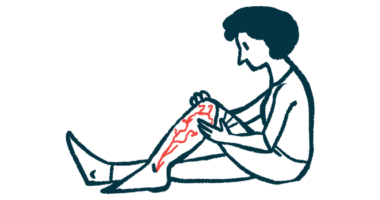The Difference Between Being a Caregiver and Being Caring

2013 was a landmark year for my husband, Aubrey, and me. That October, we received confirmation that Aubrey has hereditary ATTR amyloidosis. The results were based on a biopsy of his gastrointestinal cells using the Congo red stain method of amyloid detection.
I felt numb after hearing the news. Although I don’t remember the thoughts that ran through my head that day, I do recall my husband repeating his desire to travel and do as many activities as possible as a family before he became too physically impaired and could no longer do much.
He knew the scenario all too well. As a teenager, he had cared for his grandmother, and later his father, who both suffered to the very end with hereditary amyloidosis.
Fast-forward to 2021, and the destructiveness of the disease has now become evident in Aubrey. If a line graph could depict his health status since 2013, it would gradually decline in the beginning, plateau for a short period of time, then suddenly dip ferociously downward.
He is currently on an unpleasant roller coaster descent, praying for the ride to level out. English scholar and author Thomas Fuller said, “The worse the passage the more welcome the port.” This may sound like an exaggeration on my part, but as a caregiver, the locomotion is there for me to witness. I know I am not that far off the mark in my description. Just as he is on that amyloidosis roller coaster jaunt, I, too, am riding my own track built around his.
One lesson I have learned from this experience of tending to Aubrey is that there is a distinct difference between being a caregiver and being caring.
As a caregiver, I make myself readily available to meet my husband’s basic physical needs. I make sure that he lives in a comfortable and clean home, that he eats proper meals, and that his health status is safeguarded constantly. I make sure he does not become overwhelmed by people around him, and more often than not, I prevent him from overexerting himself by doing too much. Caregiving involves action plans, and as long as they’re adhered to, they ensure good outcomes for both of us.
Caring, on the other hand, refers to meeting the humanistic and emotional needs of the sufferer. It entails being constantly mindful and emotionally present with Aubrey no matter what I am going through in my own life. A steady nourishment of empathy for what he is going through must be provided, no matter how many times I have seen or heard it happen. Caring is, without a doubt, more difficult.
As caregivers, once we understand the difference between the two, we become less overwhelmed and cease feeling that we are not supporting our ill spouse enough. Guilt can greatly damage the relationship.
To mitigate this emotional hotbed, I try to practice intentionality and mindfulness in my daily living. This helps me maintain my position as a caregiver while being caring toward my husband. I do not get it right all the time, but as long as I am self-aware, I am able to realign my thoughts and behaviors back to where they need to be.
***
Note: FAP News Today is strictly a news and information website about the disease. It does not provide medical advice, diagnosis, or treatment. This content is not intended to be a substitute for professional medical advice, diagnosis, or treatment. Always seek the advice of your physician or other qualified health provider with any questions you may have regarding a medical condition. Never disregard professional medical advice or delay in seeking it because of something you have read on this website. The opinions expressed in this column are not those of FAP News Today or its parent company, BioNews, and are intended to spark discussion about issues pertaining to familial amyloid polyneuropathy.







Comments